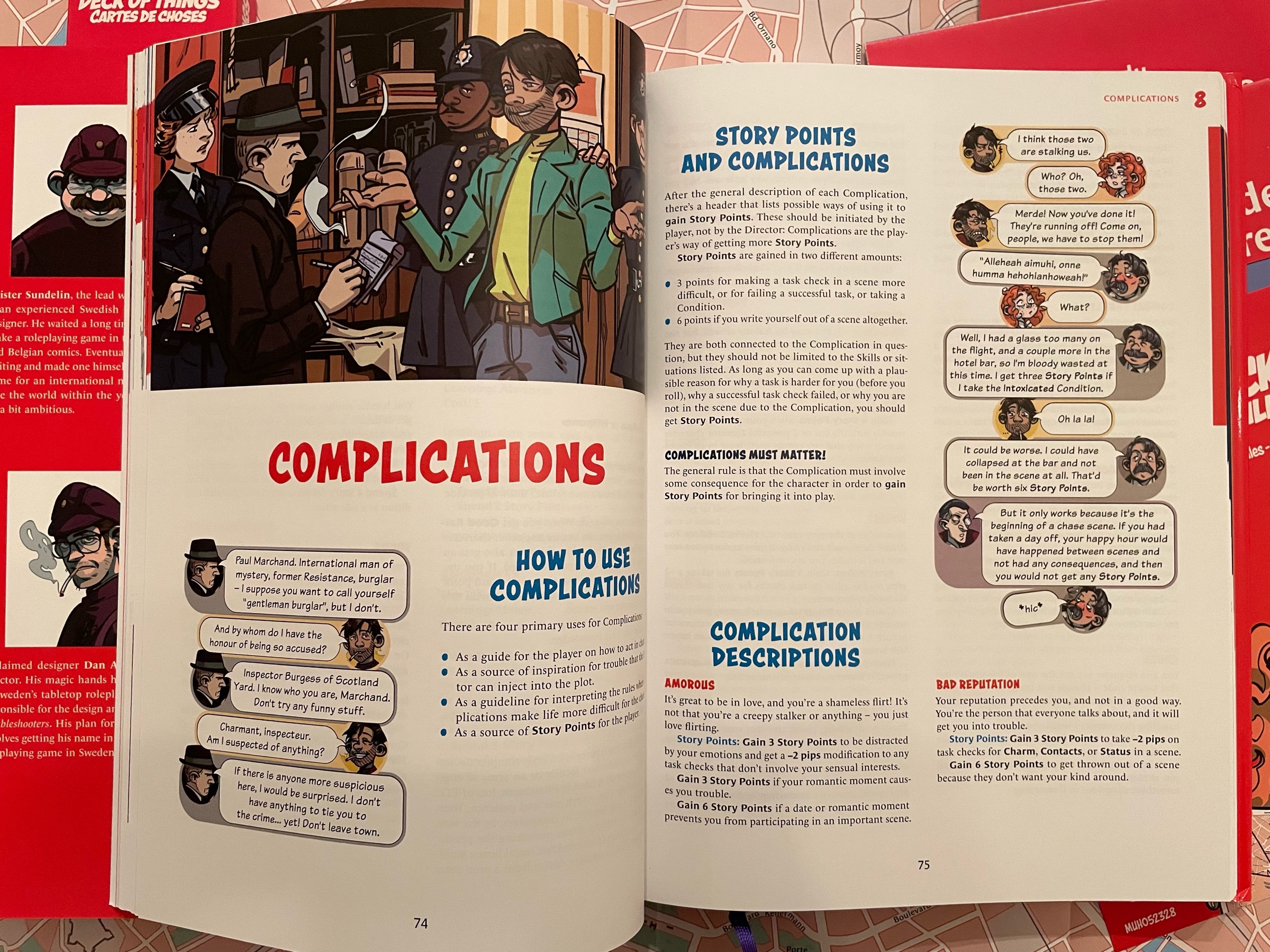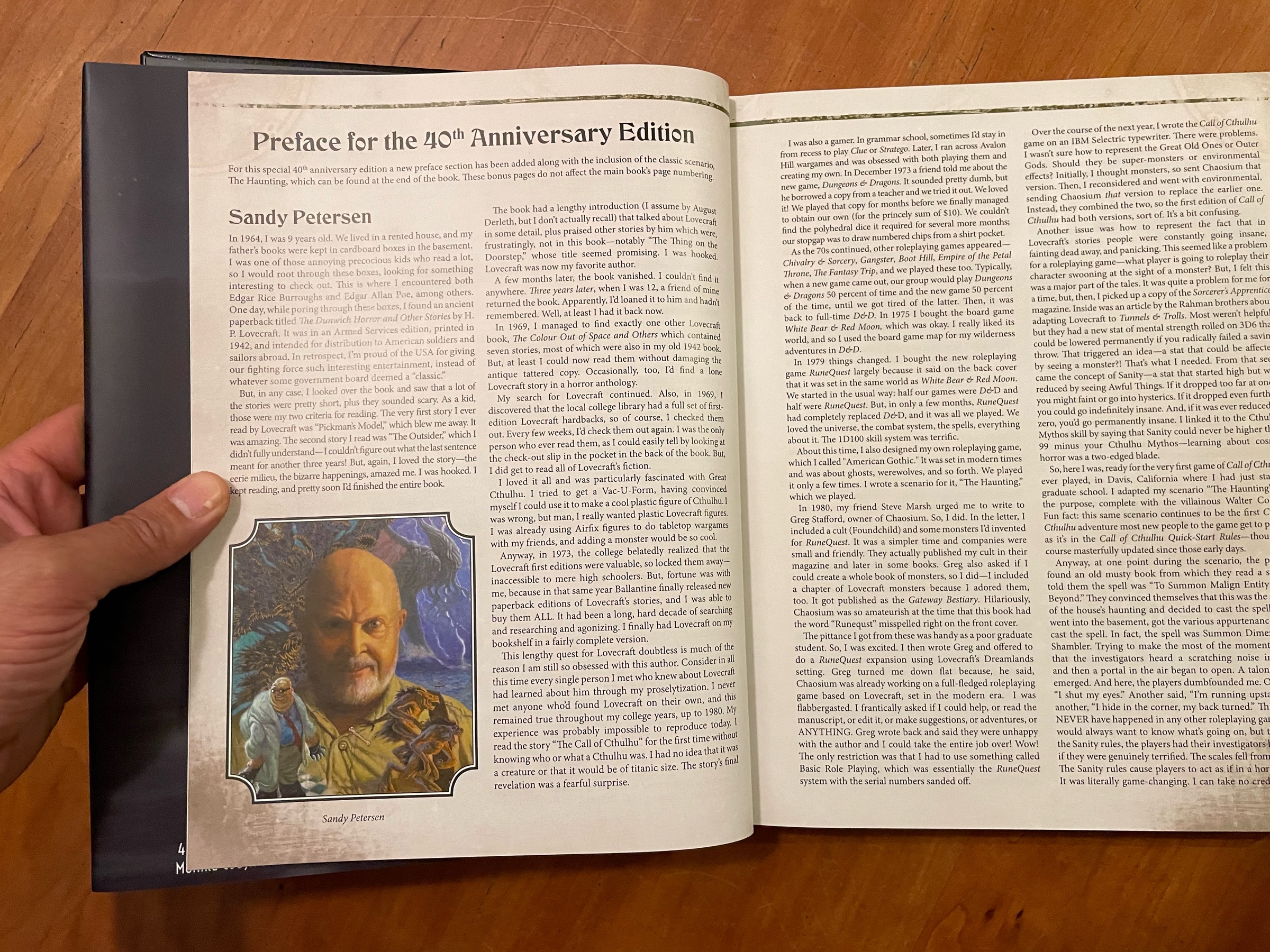Interesting how, as our TV and even movie entertainment becomes more serialized, our RPGs become more procedural… #ttrpg
The Stochastic Game
The Troubleshooters, an action/investigation RPG heavily inspired by Tintin, Spirou & Fantasio, and other Belgian/French comics from the 50s~80s. It has lots of cool handouts and props!




Love! Jealousy! Scandal! And epistolary downtime activities! That’s the Jane Austen RPG!




The Call of Cthulhu 40th anniversary book looks nice! I like the red colour on the pages…




Merry Christmas from a good boy in snowy Vancouver, BC!

We watched Edge of Tomorrow for the 3rd time and it’s still awesome. This time the 12yo kid watched with us and he rated it 10/10. He’s growing to love time travel movies too which makes me very happy.
My RuneQuest Starter Set has finally arrived! The first order of business was of course to weigh it against all my other Starter Sets… 😅


The Really Dicey channel on YouTube has a nice review of Journal d’Indochine (for which I wrote one adventure). Check it out if you’re unsure about buying the books! https://www.youtube.com
How to make a CPU… woah https://blog.robertelder.org/
I’m triggered http://www.dorktower.com